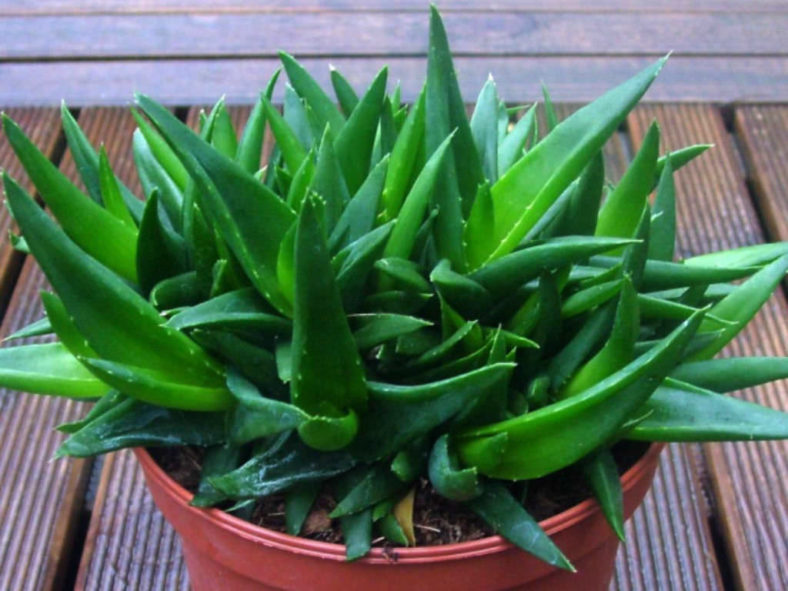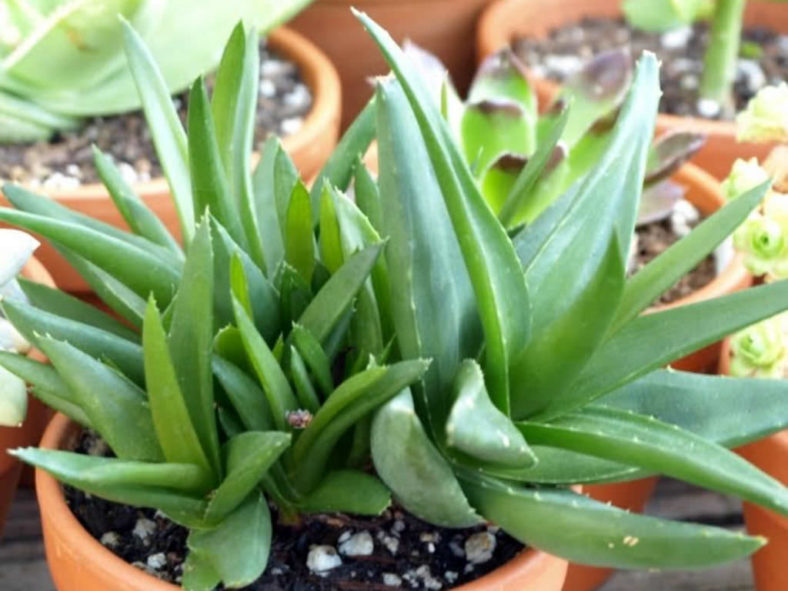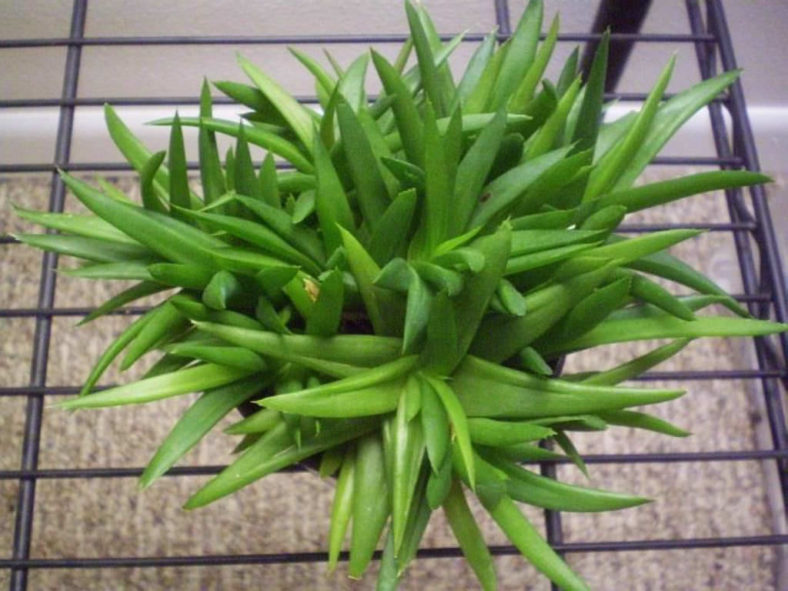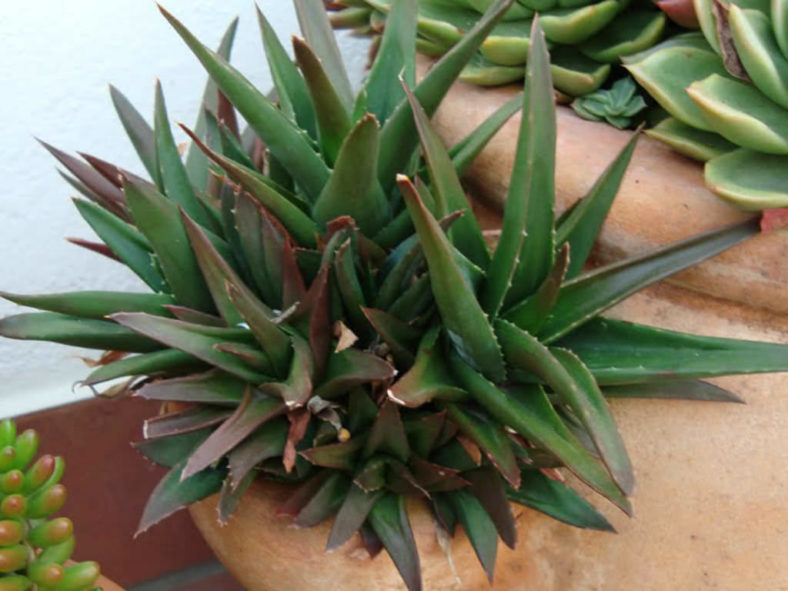Scientific Name
×Alworthia 'Black Gem'
Synonym(s)
Aloe 'Black Gem'
Scientific Classification
Family: Asphodelaceae
Subfamily: Asphodeloideae
Nothogenus: ×Alworthia
Origin
×Alworthia 'Black Gem' is an intergeneric hybrid that probably results from a cross between Aloe speciosa and Haworthia cymbiformis.
Description
×Alworthia 'Black Gem', also known as Aloe 'Black Gem', is a popular succulent that forms stemless rosettes of thick, fleshy, triangular leaves. It offsets freely, forming a dense clump. The leaves vary from dark green to reddish or bronze in bright sunlight. They become darker and redder the more sun they get.
This hybrid is also sold as ×Alworthia pentagona 'Black Gem'.

Hardiness
USDA hardiness zones 9b to 11b: from 25 °F (−3.9 °C) to 50 °F (+10 °C).
How to Grow and Care
Aloes are very forgiving plants. However, as with all succulents, Aloe must never be allowed to sit in stagnant water, and the plant should be carefully monitored to watch for signs of overwatering.
These succulents are not particularly fast-growing and will only rarely need repotting. In the spring, repot Aloes tipping over their pots or have ceased growing. A well-drained potting mix is essential. Use a cactus or succulent soil mix. When repotting a larger plant, dividing the root ball carefully is possible. Some varieties of Aloe will send off offsets that can be potted independently.
Aloe plants need strong, bright light. Once acclimated, they can withstand full summer sun. In the winter, provide bright light. These plants prefer warmer temperatures of 70 to 80 °F (21 to 27 °C) but will survive down to 40 °F (4.5 °C). Feed with a fertilizer for cacti and other succulents in spring and summer only.
Learn more at How to Grow and Care for Aloe.
Forms
Links
- Back to nothogenus ×Alworthia
- Succupedia: Browse succulents by Scientific Name, Common Name, Genus, Family, USDA Hardiness Zone, Origin, or cacti by Genus
Photo Gallery
Click on a photo to see a larger version.


